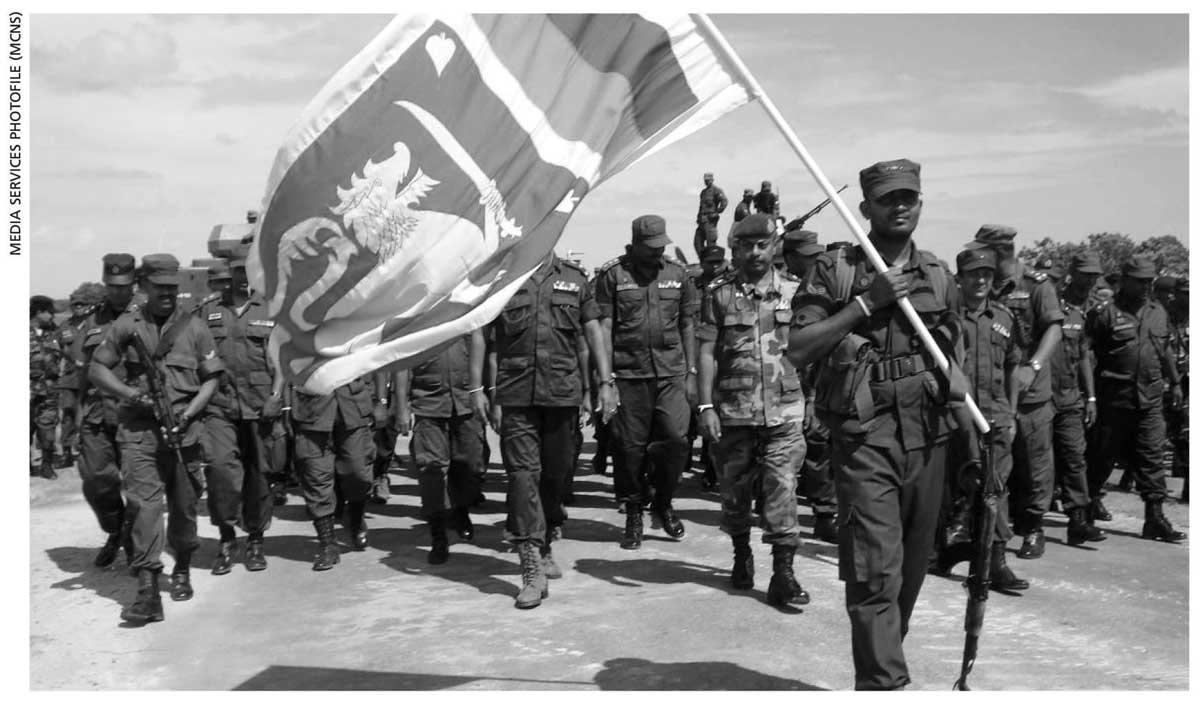2009
The 26 Year War Comes To an End
Security forces secure military victory
It had been called Sri Lanka’s ‘unwinnable war.’ On the basis that the Liberation Tigers of Tamil Eelam (LTTE) could not be defeated militarily, the Government of Sri Lanka (GOSL) had tried every other tactic in the book of combat, ceasefire and civil negotiation.
But a series of false starts and broken promises had proven the foes on both sides of the protracted conflict to be implacable. And what had deteriorated into a war of attrition continued to cost lives.
A trifecta of circumstances was soon to change that…
First, there was a growing sense that the Sri Lanka Army (SLA) under the command of Lieutenant General Sarath Fonseka could overcome the Tigers on their own ground.
Then came the meshing of the military machine with the administrative bureaucracy in the person of Defence Secretary Gotabaya Rajapaksa.
And finally, the political will to pull through was provided by President Mahinda Rajapaksa.
The final push began as early as January 2008 when the GOSL unilaterally withdrew from the Ceasefire Agreement (CFA) following the LTTE’s defeat in the Eastern Province in 2017 and its subsequent withdrawal to the jungles of the Vanni.
This set the stage for the SLA to focus its fire on the Forward Defence Lines (FDLs) at key strategic points in the Northern Province – viz. Muhamalai, Nagarcoil and Kilali. And the security force’s new operational tactics included simultaneously opening several battlefronts to place the Tigers in their lairs under mounting pressure.
The LTTE felt the pinch and retaliated with suicide attacks on Sri Lanka Navy seamen and there was even a bus bomb in Colombo that claimed the lives of 24 civilians as it seemed inevitable that the longstanding rebel strongholds in the north were crumbling under attack by army skirmishes and bloody ‘inch by painful yard’ advances with heavy losses (albeit officially denied).
In the final stages of Eelam War IV, it seemed inevitable that there would be outrages on both sides of the conflict. Indeed, despite the LTTE’s denials and the GOSL’s ‘Zero Civilian Casualties’ policy statement, a plethora of war crimes and human rights abuses were committed by both actors in the violent last-ditch confrontation of a 26 year war.
Eventually, the GOSL declared military victory over the LTTE on 16 May 2009. A Tiger statement confirmed that “this battle has reached its bitter end.”
In the same month as the military conflict ended, the UN estimated that 7,000 civilians – of whom 1,000 or so died in heavy artillery bombardment – had been killed in Eelam War IV (January to May 2009) and 16,700 wounded.
Peace had come at a heavy price that saw 100,000 or more Sri Lankans killed and millions more wounded, victimised and traumatised for life.
War is hell! At least it was over.
The final push began as early as January 2008 when the GOSL unilaterally withdrew from the Ceasefire Agreement (CFA) following the LTTE’s defeat in the Eastern Province in 2017





